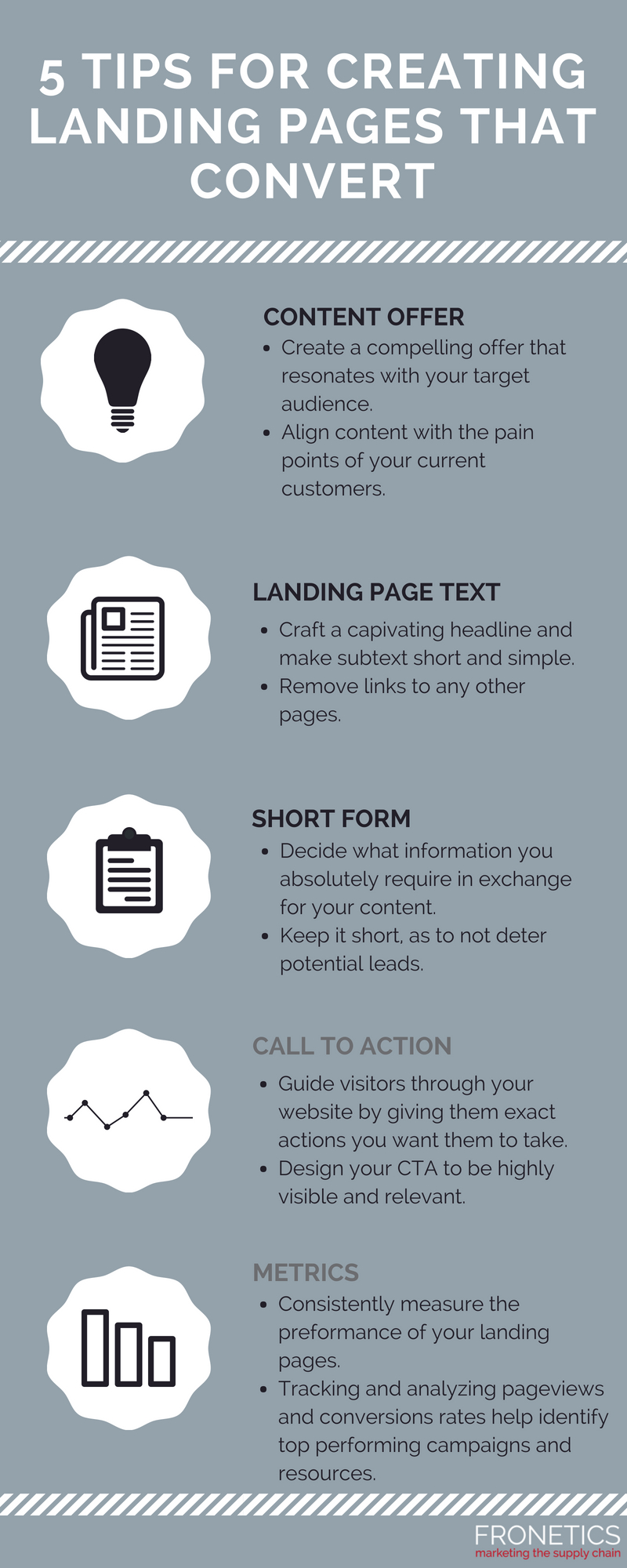
by Fronetics | Jul 10, 2018 | Blog, Content Marketing, Logistics, Marketing, Social Media, Strategy, Supply Chain
As with many things, blogs improve with age — drawing more traffic, generating more leads, and building more credibility with search engines.
The average lifespan of a tweet is around 15 minutes. And a Facebook post’s lifespan is about 6 hours. But the lifespan of a blog post averages two years. TWO YEARS.
[bctt tweet=”80% of our website traffic comes from blog posts that are over six months old. HubSpot discovered a similar trend: 76% of its monthly views came from old posts, as well as 92% of the company’s monthly leads!” username=”Fronetics”]
In fact, we find that 80% of our website traffic comes from blog posts that are over six months old. HubSpot discovered a similar trend: 76% of its monthly views came from old posts, as well as 92% of the company’s monthly leads!
Why is that? Because, as with many things, blog posts improve with age. Search engines give value to older content that has had more time to accumulate social shares, likes, and referrals from other web pages. The more relevant a blog post proves itself to be to readers over time, the higher it will rank in search engine results.
Optimizing older content
Blog posts also give marketers an opportunity to dust off older content and rework it to be relevant and up-to-date to target audiences. Using analytics tools, marketers can track posts that had high traffic and conversion rates and work on optimizing the content. Updating older posts with new statistics, relevant keywords, and spruced-up calls-to-action will breathe new life into your older content.
Lead-generation tool: your blog
A blog is an excellent lead-generation tool. But, as I’ve written before, it takes time to generate leads and sales. Patience is a virtue, but it’s a particularly difficult one to keep in mind when you’re trying to grow business and keep your boss happy.
Your posts need time to start drawing traffic — and then, from traffic comes leads. Here’s why blog posts, like a fine wine, will continue to improve with age and why you shouldn’t give up on your efforts.
Video: Why blogs improve with age
Takeaway
With high-quality, relevant content, your blog will pay off. You should keep tending to your already published content, particularly those posts that prove to be a consistent source of traffic.
Update information; add links to new related posts or other relevant resources; and seek opportunities to insert or update calls-to-action to current offers and campaigns. Making sure those older, consistently popular posts continue to serve and engage your readers will increase your chances of conversion.
And, don’t forget: Something that doesn’t get a lot of views in the first week may be a huge traffic source and lead converter in a little time. Many content management systems, like HubSpot, can generate attribution reports, which tell you which web pages users most often visit before converting to a lead. Compare these pages with your high-traffic pages that don’t make the list to see how you can create more opportunities for lead conversion on the pages earning the most traffic.
Related posts:


by Fronetics | Jul 9, 2018 | Blog, Content Marketing, Logistics, Marketing, Social Media, Supply Chain
Here are our most-viewed supply chain and logistics blog posts from this year as of July 1, 2018.
Throughout the year, we regularly write blog posts to help our readers stay on top of the latest news and happenings in the supply chain and logistics industries, particularly in regards to content marketing. We hope these posts provide insight, tips, and insider information on how to stay head of your competitors with the consistent publication of quality content.
We’ve covered some great stuff this year, from new trends (like chatbots) to questions that clients ask year after year (like how is the industry using social media?). Here’s a look at our most popular posts so far this year.
Top supply chain and logistics blog posts from 2018 (so far)
1. 10 Must-Follow Supply Chain and Logistics Blogs in 2018
These 10 blogs are all rich with industry news and the latest trends to keep you in the know. They cover a wide range of topics, from research to strategy, and feature some of the top thought leaders in the field. Read more.
2. 5 Must-Read Books for Supply Chain Leaders
One of the best ways to sharpen your leadership skills is by learning from other leaders’ experiences. Leadership books, especially those focused on the supply chain and logistics industries, give valuable insight into the trials and triumphs of your industry peers’ encounters. Read more.
3. Top 3 Logistics and Supply Chain Blogs of 2018
You voted, and the results are in! LTX Solution is your number one favorite blog of the year, with “Ellen’s Blog” of Women In Trucking and Apex Capital Blog coming in second and third. What remained consistent from previous years is the quality of the content and the consistency of posting by the three winners. Read more.
4. 7 Supply Chain & Logistics Professionals to Follow on LinkedIn
LinkedIn, with almost 500 million users, is the #1 networking site for professionals. Following LinkedIn members gives you access to their profiles, as well as any original or third-party posts they publish on their newsfeeds. Here are 7 supply chain and logistics professionals to follow for top posts and articles in your industry. Read more.
5. B2B Marketing Trend 2018: Influencer Marketing
One of 2018’s fastest growing marketing trends is influencer marketing. Companies will increase their influencer marketing budget to keep up with the competition. 86% of B2C marketers used influencer marketing in 2017, and 92% of marketers that tried it found it to be effective. B2B marketers, on the other hand, have been slower to adopt this new marketing trend. Read more.
6. 6 Reasons Your Supply Chain Employees Are Looking for New Jobs
With the rising demand for professionals in Supply Chain Management and Procurement, there’s a lot of employment activity, especially in short-term contracts. This guest post from Argentus covers the subtler reasons that star performers in these functions get the desire to make a move. It’s not out of a desire for more money as often as you might think. Read more.
7. Drawing Lessons from Tesla’s Supply Chain Issues
A great article last month from CIPS’ industry magazine Supply Management dove into some of Tesla’s Supply Chain woes, discussing how the company, still considered a visionary in the industry, has gotten into some challenges, as well as some optimistic scenarios for how it can get out of it. Read more.
8. Top 10 Social Media Analytics Tools
Analyzing your social media performance is critical to a successful marketing effort, especially in light of recent changes to Facebook’s News Feed. You need the tools to determine what’s working and what isn’t, as well as the best time to post your content for your target audience. Read more.
9. KFC Ran Out of Chicken in the UK: What Supply Chain Lessons Can We Learn?
More than half of the UK’s Kentucky Fried Chicken stores recently closed because they ran out of chicken. A few weeks later, reports are that a number of stores are still closed, with front-line workers being encouraged to take holidays as the company sorts out its deliveries and tries to account for the failures. This guest post from Argentus provides a look at what caused the issues and what supply chain lessons can be learned. Read more.
10. Writing for SEO: Topic Clusters and Pillar Content (NOT Keywords)
I’ve been hinting — more like, emphasizing — in our recent Writing for SEO series that trying to rank for certain keywords in each blog post you publish is a practice on the way out. You may have been wondering what you’re supposed to do instead. This post on topic clusters and pillar content is your answer. Read more.
What supply chain and logistics blog posts have you most enjoyed this year? Are there any topics you’d like us to cover? Please reach out to us and let us know!
Related posts:


by Fronetics | Jul 5, 2018 | Blog, Content Marketing, Current Events, Logistics, Marketing, Social Media, Supply Chain
The latest social media statistics show growth of Instagram, social messaging bots, and video content.
We joke around here that one thing that will always stay the same is that social media will always be changing. 2018 has been a remarkable example of that thus far, particularly in regards to platforms like Facebook.
Every so often, we like to take a step back and look at what the data is telling us about where social media is heading and what that might mean for B2B marketers.
Social Media Examiner’s 10th annual study, 2018 Social Media Marketing Industry Report, surveyed more than 5,700 marketers from across the world in a variety of industries — including manufacturing, industrial goods, and a variety of other B2B verticals. It offers a really comprehensive view of what’s going on in social media in our industry and beyond.
I’ve pulled out 10 social media statistics from this report that I want to talk about in more depth. I think they say a lot about where social media is headed and what supply chain and logistics marketers should be paying attention to.
10 social media statistics for B2B marketers
1) For 64% of marketers, social media management is just one of their job responsibilities.
This one blows me away, knowing how much time and effort it takes to run a company’s social media program. Only about one-third (36%) of marketers manage social media full time. The other two-thirds have to do that on top of their other responsibilities. That’s crazy!
Supply chain, it’s time to recognize how important social media is for your business and dedicate the appropriate resources to social media management. If you can’t afford to hire someone to do it full time, consider outsourcing this task.
2) Only 44% of marketers agree they can measure their social media ROI.
Only 10% of survey respondents “strongly agree” and 34% “agree” with the statement, “I am able to measure the return on investment (ROI) for my social media activities.”
Again, I’m kind of blown away. As a firm that relies on data and analytics to inform our processes and strategies, including social, it seems irresponsible to not know if your efforts are effective.
Ok, on one hand, it’s actually really difficult to measure social media ROI. That’s in large part because so many of the benefits are intangible. You should really be thinking of social media investment in terms of potential, not dollars.
BUT there are some ways to calculate social media ROI and all your content marketing efforts. Here are a few resources:
3) 75% of marketers have seen a decline in organic Facebook reach over the last year or don’t know if they have.
A significant 52% of marketers surveyed said they saw their Facebook reach decline in the last year. Plus, 23% of marketers surveyed were unsure if it had or not — probably not a good sign. Yet 91% of B2B marketers are still using Facebook. Something’s not adding up for me here.
As we’ve written about a lot recently, businesses need to be keeping a close eye on Facebook in light of all the recent changes. While we at Fronetics are not ready to write off Facebook for business completely yet, it’s time to start doing things a little differently.
Here are four things your business should do in light of Facebook News Feed changes, for example. Stay tuned to the Fronetics blog as we continue to gather information and offer suggestions.
4) 87% of marketers rank more exposure for their businesses as the primary benefit of their social media efforts.
Building brand awareness is a key benefit of social media use for business. The Social Media Examiner survey respondents said that increased traffic was the second major benefit, with 78% reporting positive results. These top two benefits have remained virtually unchanged for 4 years.
That’s because, increasingly, more B2B buyers are using social media in their purchasing research. If your business is not on social media, you’re missing an opportunity to get your brand name in front of these buyers.
5) 78% of marketers who have used social media for 2 years or more report increased traffic to their websites.
[bctt tweet=”83% of marketers who have used social media for 5 or more years “strongly agree” or “agree” that traffic has increased to their websites because of social media activity.” username=”Fronetics”]
Also to note, 83% of those who have used social media for 5 or more years “strongly agree” or “agree” that traffic has increased to their websites because of social media activity.
I wanted to pull these social media statistics out because they reinforce the time-honored truth that content marketing (including social media management) is a long-term solution — not an overnight fix. The benefits, especially in terms of metrics like traffic, grow exponentially over time.
You have to allow time for prospects and customers to find you and for your audience to grow organically. Use your social media platforms as a means to distribute meaningful information to your target audience, to communicate with customers and prospects, and to share thought leadership, and it will pay off.
6) 66% of marketers are now using Instagram.
In 2016 and 2017, we answered a lot of questions about Snapchat. Founder of the Content Marketing Institute Joe Pulizzi named Snapchat one of the next big trends in content marketing for 2017. Everyone thought this platform was going to be our new social media darling.
Instead, Instagram has surpassed Twitter and LinkedIn to be the second-most-used social media platform. (It was fourth in 2017.) Use is up dramatically from 54% in 2017. Those are numbers worth paying attention to.
We don’t have a lot of supply chain and logistics clients that currently use Instagram, but we know it to be a great platform for brand building, especially in terms of recruiting and developing corporate culture. Stay tuned for more on Instagram for the supply chain in the near future!
7) 63% of marketers use video content in their social media marketing.
One content marketing trend everyone got right? The growing prevalence of video.
Not only do nearly two-thirds of marketers use video content in their social media marketing, 23% use live video. What’s more, 77% plan to increase video content and 63% plan to increase live video in the next year.
Here are some helpful resources to get you started:
8) 70% of marketers want to learn more about messenger bots.
Here’s a big takeaway from the survey: Everyone’s talking about messenger bots/social messenger apps. While adoption is still pretty low (only 15% are using Facebook messenger bots now), 51% of survey respondents plan to include them in future marketing.
It’s time to start reading up on social marketing automation tools like chatbots and social messenger apps. We’ve got a lot of information about these things scheduled on our blog in the next few months, so keep coming back for more information on how these tools apply to supply chain and logistics marketing.
9) 39% of marketers are working with influencers.
Influencer marketing is another trend we’ve been talking about lately. It makes sense: Buyers value the opinions of peers and colleagues. In fact, B2B buyers rank it among their top three resources for information. And, in general, 82% of Americans seek recommendations when making a purchase of any kind.
Here’s my original post on influencer marketing for the supply chain. Keep in mind, influencers can be your executives, employee brand ambassadors, and any other experts and thought leaders associated with your brand.
For some more information, start with these 3 Tips for Creating an Influencer Marketing Strategy for the Supply Chain.
10) Only 21% of B2B marketers are using LinkedIn ads.
Social media advertising is another huge trend right now. Yet, this social media statistic tells an interesting story.
Though LinkedIn is considered the business social media network, less than one-fourth of B2B marketers are using it to advertise. Compare that to 66% of B2B marketers that use Facebook ads.
There are many reasons for this, of course. LinkedIn advertising is quite expensive, whereas Facebook advertising is relatively inexpensive, for one. But, as Facebook continues to elude businesses, might this be an opportunity to rethink this strategy?
If you’re interested, I recommend reading the whole 44-page report from Social Media Examiner. There are a ton of really interesting social media statistics that offer great insight into how marketers are using social media and how it’s changing — both over the the last few years and in the short-term.
What social media statistics are most interesting to you?
Related posts:


by Fronetics | Jul 3, 2018 | Blog, Content Marketing, Logistics, Marketing, Supply Chain
Getting lots of web traffic but short on leads? Here are five tips to help create strong landing pages that convert visitors to leads.
We hear it all time: “My website is getting great traffic, but we’re not converting those visits to leads.”
We compare it to the Patriots getting the ball all the way down the field but then not being able to score a touchdown. Chances are your landing pages are the problem.
[bctt tweet=”We hear it all time: “My website is getting great traffic, but we’re not converting those visits to leads.” We compare it to the Patriots getting the ball all the way down the field but then not being able to score a touchdown. ” username=”Fronetics”]
Landing pages are a fundamental tool in converting website visitors into leads. They’re what convince your visitors that they absolutely must download your fabulous resource offer. Yet oftentimes they’re treated as the annoying little sibling to high-value content pieces — tagging along almost as if an after-thought.
In reality, landing pages have just as much, and possibly even more, importance than the content offer. What good is your best resource if your landing page doesn’t do its job? You don’t want people to just visit your website. You want them to take action while they’re reading your content.
Here are five tips for supply chain marketers who are looking to generate better conversion rates from their landing pages. These tips make it easy — and tempting — for visitors to take action.
Infographic: 5 tips for creating landing pages that convert

(Made with Canva)
Key takeaway
It comes down to basically one objective: Be clear about what you want your visitor to do on your landing page. All of these recommendations help to create a landing page that makes it easy — and beneficial — for visitors to take a specific action.
Once you’ve made adjustments to your landing page, don’t forget to test, test, test! Still not getting the conversions you’re looking for? Go back and continue to tweak. Soon enough, you’ll have solid landing pages that convert those visitors to leads.
Related posts:


by Fronetics | Jul 2, 2018 | Blog, Content Marketing, Logistics, Marketing, Social Media, Supply Chain
The growth of social messaging platforms is a big opportunity for your business to reach your audience with targeted content.
Gone are the days when social messaging platforms are just about chatting or making plans with family and friends. You might be surprised to learn that “the combined total monthly active user count of the top 4 messaging apps has grown to 4.1 billion in 2018.”
[bctt tweet=”You might be surprised, according to Business Insider, “the combined total monthly active user count of the top 4 messaging apps has grown to 4.1 billion in 2018.”” username=”Fronetics”]
Just to put that in perspective, that’s well over half of the world’s population and — perhaps even more strikingly — dwarfs the 2.19 billion monthly active users that Facebook reported in the first quarter of 2018.
It’s official: Social messaging platforms have surpassed “traditional” social media when it comes to active users. Not only that, marketers are taking notice, and beginning to think about how to leverage messaging platforms to deliver content to target audiences.
Conversational content
As you might expect, a key element of successfully using social messaging platforms is to tell your story conversationally. This means tailoring your content to the specific wants or needs of your target audience, creating a compelling narrative with your content, rather than an overt sales pitch.
This kind of storytelling is fundamental to content marketing.
“Messaging and chatbots represent the next logical extension of the content marketing mission,” writes Chris Frascella of the Content Marketing Institute.
According to Thomas Husson of Forbes, “Messaging apps will introduce a paradigm shift for marketers where interactive and contextual conversations will replace ad broadcasting. New conversational interfaces will drive deeper relationships between consumers and brands.”
You may be thinking that this is all well and good for B2C marketing, but how does it apply to B2B marketing? But the truth is, if you have a content marketing strategy in place, chances are, you have a story to tell, and these are tools to help you do it.
Chatbots
Enter chatbots, the technology to turn your content into conversations. Chances are, you’ve already come face-to-screen with a chatbot and may not have even known it.
These computer programs simulate human conversation using auditory or textual methods. Basically, it’s software that communicates with your target audience inside a messaging app. Chatbots are already changing the way businesses interact with their customers — and with each other.
If you’re thinking that you’re about to be replaced by a robot, relax. We’re extremely far from AI technology replacing human interaction. Chatbots are a tool, and they need to be fed content and trained by human marketing professionals.
Tips for using chatbots
The first step is adapting your content for use in a chatbot conversation. “You can’t just duplicate existing content in your conversational scripts,” says Frascella. While the goals for your content are the same, the way it is delivered is different. That requires a shift in how it’s structured.
It’s also important to be mindful of timing. Because chatbots require users to opt into conversations, retaining permission to access your audience in this way depends largely on content and timing. This means delivering engaging, meaningful, and valuable content at regular intervals, but not intrusively.
For more ideas on creating a chatbot, check out this post.
Social messaging platforms are opening new doors for you to deliver personalized content straight to your target buyers. Make the most of this opportunity!
Related posts:


by Jennifer Hart Yim | Jun 27, 2018 | Blog, Content Marketing, Logistics, Marketing, Supply Chain, Talent
Millennials are breaking stereotypes across the industry. This new generation is bringing youth, better education, and lots of diversity to supply chain management.
This guest post comes to us from Argentus Supply Chain Recruiting, a boutique recruitment firm specializing in Supply Chain Management and Procurement.
Everyone knows that the demographics of the Supply Chain industry are changing. They have to. Within a few years, demographers estimate that 400,000 baby boomers will be retiring in Canada every year. Within the Supply Chain industry, the looming – and in fact, already-started – retirement of baby boomers and shifting job responsibilities brought about by technology are creating a talent crisis.
It’s something that we’ve covered extensively at Argentus. We’ve written about how the industry can fill the burgeoning gap in talent: by increasing educational opportunity, doing more outreach to young people, and improving communication about the vast career potential in the field – a field that until recently was stereotyped as transactional, hidebound and, in a word, boring.
Today’s Supply Chain professionals know that – especially at the highest levels – the field is anything but. And it looks like some of these efforts to avert the talent crisis have begun to bear fruit: a major new survey shows that millennials are moving into the workforce in a big way, changing its Supply Chain’s demographics and disrupting the industry.
The survey, conducted by Peerless Research Group, Supply Chain Management Review, APICS and APQC surveyed 676 millennials (between the ages of 22 and 37) in April 2017 to find out about their demographics, expectations, goals and current career status within the Supply Chain industry. It’s a far-reaching report with a lot of results busting down stereotypes both about Supply Chain and millennials themselves.
As a recruitment company specializing in Supply Chain and Procurement, Argentus sits at the nexus of a lot of these demographic changes. Needless to say, we read the report with great interest. Here were some of our biggest, and most surprising, takeaways.
Takeaways from Apix survey on millennials in supply chain.
Careers are becoming more intentional:
- When we speak with SCM professionals from the baby boomer and Gen X generations, it’s really common for us to hear, “I didn’t plan on going into Supply Chain, but I fell into it.” But this tendency is changing. The report found that 75% of millennials in Supply Chain jobs intentionally began their careers within the field.
- Planning and Procurement are taking on a bigger role in the field: 22% of millennials surveyed are working in Planning and 21% in Procurement, compared to 15% in Logistics, 11% in Inventory Management, and 9% in Manufacturing.
Supposed “Job Hoppers” are actually staying put:
- We’re maybe a ways past the 2008-2014 heyday of stereotyping millennials in the workforce. Companies are realizing millennials’ huge value as employees. With that in mind, the report still dispels some classic stereotypes about millennials in the workforce. There’s a perception that millennials are “job hoppers” who don’t have loyalty to their employers, but the survey found that 38% of millennial respondents have worked for just one employer their entire career. 65% had worked for their current employer for more than 5 years.
Educational opportunities are taking off:
- One of the biggest growth areas in the field is the increasing prevalence of educational opportunities as more universities and colleges bring SCM programs online. 66% of the millennials surveyed have either undergraduate or graduate degrees in Supply Chain or Logistics. APICS conducted a similar survey in 2016 – this time of senior leaders in the field – and found that only 19% of the leaders surveyed had degrees in the field, which suggests that millennials are taking advantage of these increased educational opportunities.
- 59% of the millennial supply chain employees surveyed have a bachelor’s degree of some kind, even if it’s not in Supply Chain or Logistics. The 2016 leadership survey found that only 45% of Supply Chain leaders had degrees. It’s worth mentioning that more companies are requiring degrees these days for sole contributor roles, so this might be a response to that market pressure.
- Millennials are interested in continuing education in the field, suggesting it’s not just a fly-by-night career for them. 65% of the survey respondents indicated that they were planning on pursuing further education in the next 12 months.
The gender gap is chainging, but persistent:
- More women are entering the Supply Chain field. 61% of the survey respondents were men, whereas 39% were women. It’s still not as close to even as it should be, but the breakdown was more evenly split than APICS 2016 leadership survey mentioned above: in that survey of Supply Chain leadership, 76% of respondents were male and only 24% were female. This indicates that more millennial women are entering the field than their Gen X and baby boomer counterparts. It also indicates that, as we’ve written about before, more needs to be done to bring women into Supply Chain leadership
- There’s still a stubborn gender pay gap in the field, even for millennial employees. The average compensation for male respondents was $92,920, while it was only $78,840 for women in the cohort. The survey found that men and women generally start off with equitable compensation, but the gap grows – as it does in many other fields – as they move up into more senior roles.
Millennials expressing a high degree of career satisfaction:
- On the job satisfaction front, there were some absolutely massive numbers that speak to the way the field is becoming more flexible and dynamic: 85% of millennials surveyed said that they were likely to be still working in Supply Chain in 5 years. 81% said they felt as if they could make a difference in the Supply Chain field. 85% said they agreed that the field was a diverse workforce, and 87% said that they thought working in the field would help with personal growth and development.
[bctt tweet=”87% of millennials surveyed thought working in supply chain management would help with personal growth and development.” username=”Fronetics”]
It’s exciting to see the way the field is growing and adapting to change, and the way that millennials are stepping up and reaping some of this career’s rewards. We encourage you to check out the full report. There’s a lot to dig into beyond the takeaways we’ve identified here – lots of insights that will be interesting to anyone who’s interested in the way Supply Chain careers are taking off in the 21st century.
Related posts:













